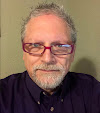For those of you like me, who did not know her story, Pauli Murray was a writer, a civil rights activist, a lawyer and legal theorist, a poet, a feminist, and in her later years an Episcopal priest. She was instrumental in forging strategies for more than one of the major breakthroughs against segregation and Jim Crow laws. She had famous cases of missing out on opportunities because of her race and gender. Indefatigable, she pressed on to achieve many "firsts" for her race and gender as well. She was one of the most important influences in seeing that Title VII of the Civil Rights laws included prohibitions against gender discrimination in employment practices.
I have been particularly interested in some of her insights about the psychological and ultimately social results of the Jim Crow system. She writes about one incident in her mid-twenties when she was denied entrance to UNC-Chapel Hill graduate school because of the NC Jim Crow laws:
At the time, however, what I felt was the galling disappointment of personal defeat. . . . Much of my life in the South had been overshadowed by a lurking fear. Terrified of the consequences of overt protest against racial segregation, I had sullenly endured its indignities when I could not avoid them. Yet every submission was accompanied by a nagging shame which no amount of personal achievement in other areas could overcome.
She boldly challenged President Roosevelt and many others about the coming reckoning for fighting Fascism and racism in Germany and Italy while tolerating it and practicing it in the U. S. As part of a direct action campaign against Jim Crow in Washington, D. C., she notes posters about the war effort against Naziism which stated, "We Die Together. Why Can't We Eat Together?" and "Are You for HITLER"S Way (Race Supremacy) or the AMERICAN Way (Equality)? Make Up Your Mind!"
She refers to a deep "disgust" and despair that every African American feels at least one out of every few days when dealing with the intransigence of racism in the U. S. Thus it was no surprise to her and other African Americans when riots broke out across the country in 1943.
Murray also comments on the psychological effects of direct action. She writes that she and a large group of Howard University students began a direct action campaign against segregated restaurants in Washington, D. C., in 1944, pioneering a methodology that would pick up again in decades to come. "It is difficult to describe the exhileration of that brief moment of victory," when the restaurant management at one cafeteria began to serve the students a meal. She adds, "The most abiding gain, however, was in our own self-respect." The deep personal effect of direct action in the cause of justice is a primary theme of her autobiography.
I am wary of referring to "psychological" effects because of the danger that readers will think of this as some kind of mind game, mind over matter, or split between the body and mind. On the contrary, what I am trying to make note of is the way that mind and body together are transformed through action for justice. It is not one without the other.
It seems that Pauli Murray's point is that she was driven by her convictions to fight racism in essays, poetry, legal argument, ministry, and direct action. What amazed her was the interrelation between her action and her mental and emotional state. The wholeness of the person is clearly demonstrated through such accounts of personal and communal change.




1 comment:
Murray was also a very closeted lesbian. I think she was celibate for life, but, if not, certainly for the majority of her life. She recognized her sexual orientation early, but felt she had enough on her plate fighting for the rights of African Americans and women. Her remaining closeted and celibate was a deliberate choice of self-sacrifice so as not to derail the movements with which she was involved. Even of her close friends, most didn't find out about her lesbianism until her private papers were published posthumously.
She was and is a very fascinating person.
Post a Comment